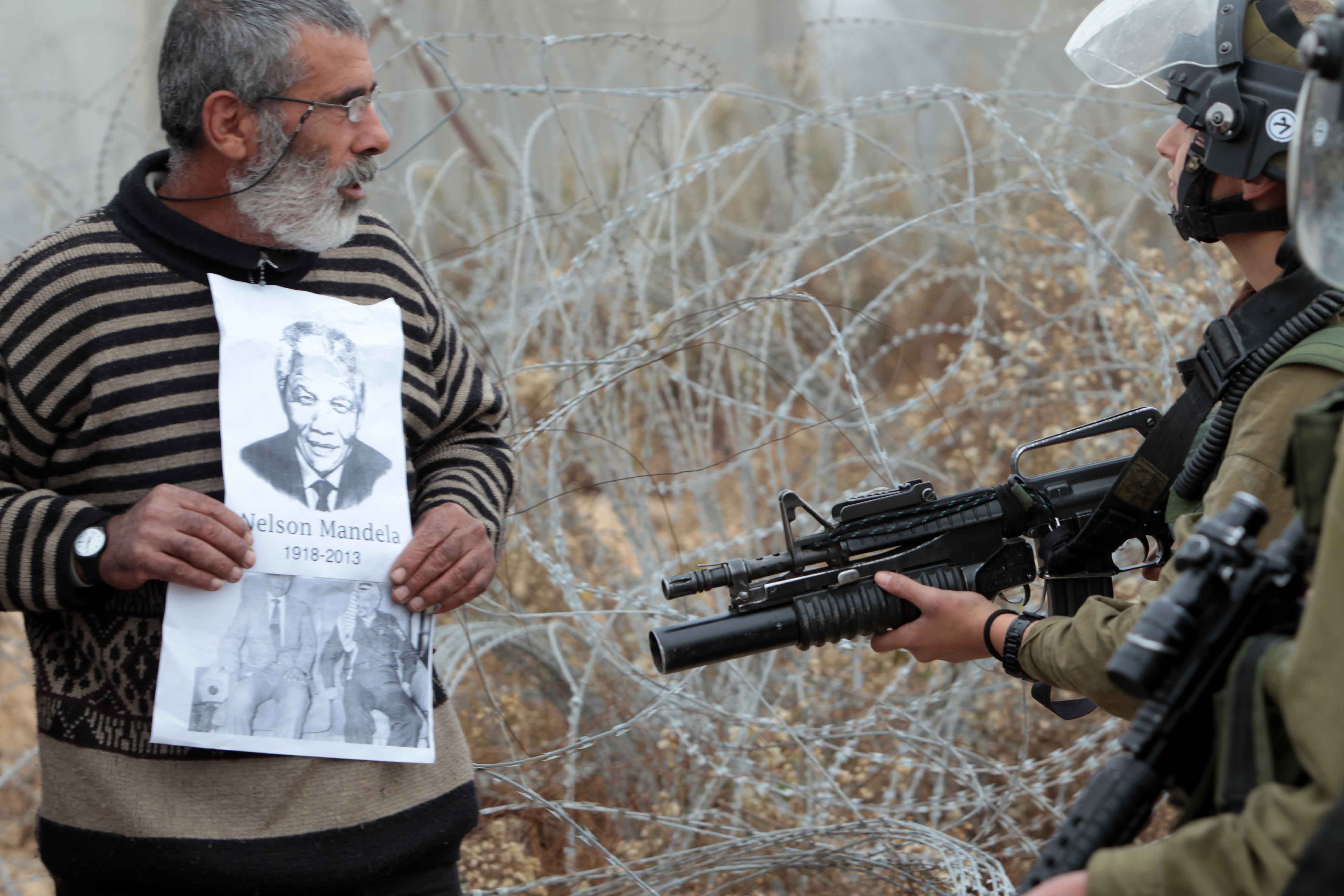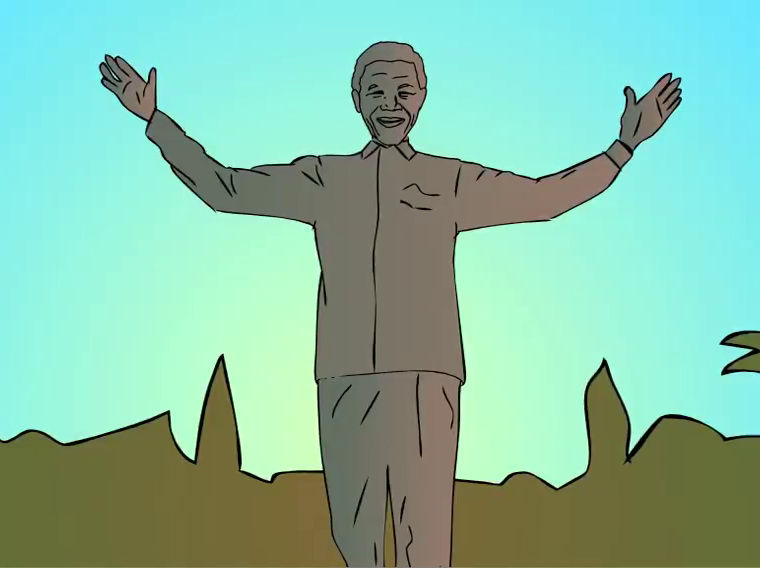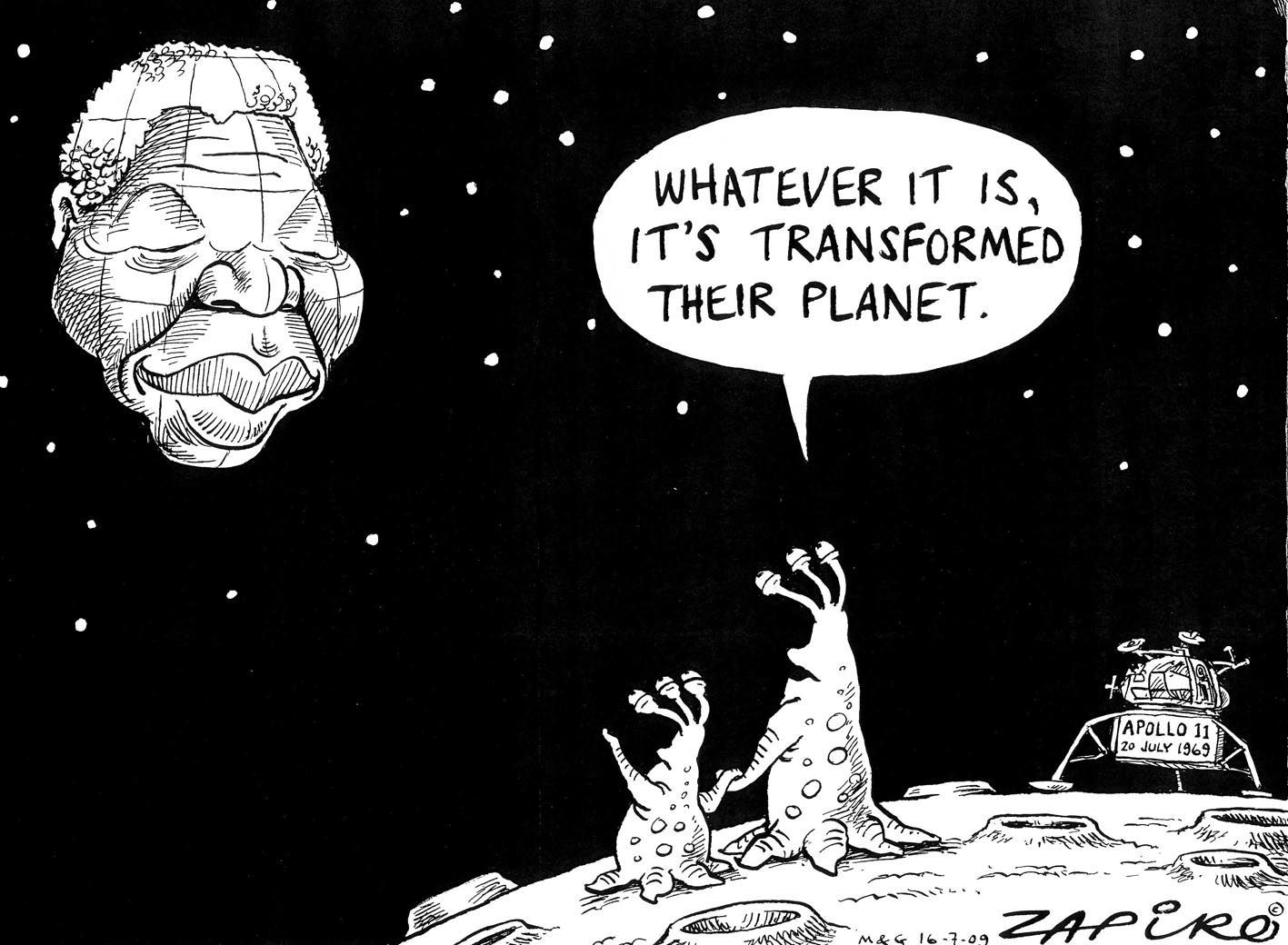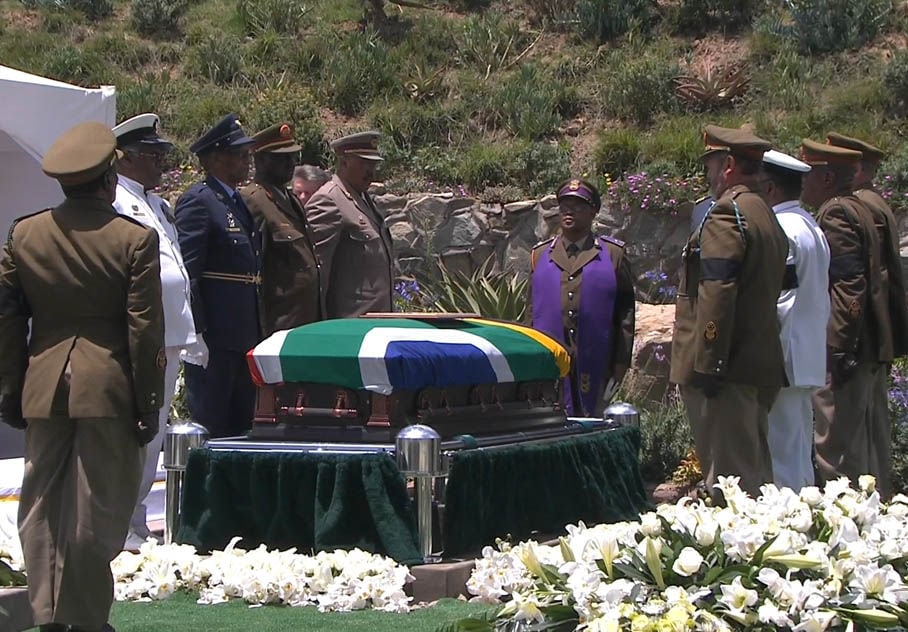
The world pays tribute to Mandela (slideshow)
As South Africans come to terms with the loss of former president Nelson Mandela, the rest of the world bids farewell to Madiba.

Pimples: Saving Madiba's rabbit (video)
Gwede, Mac and Blade try their best to stop the rabbit from whispering in Mandela's ear. But the elusive animal has some tricks up its sleeve.

Zapiro's best Madiba cartoons (slideshow)
From his toughest moments to his most triumphant, Madiba has been an inspiration. Here are some of our favourite Zapiro cartoons about him from 1994 to 2013.

Mandela: SA's greatest son laid to rest (slideshow)
The world watched as Nelson Mandela was finally laid to rest in his hometown of Qunu following a dignified and moving funeral ceremony on Sunday.
Holding the reigns of the ox-wagon that is pulling his father's coffin, Nkosinathi Biko sits alone and solemnly among the masses of people. Surrounded by a throng of supporters, angry and tearful, he cuts a figure of solitude. A hero of the apartheid struggle is dead.
Bantu Stephen Biko died on September 11 1977, but lives on through the work of the Apartheid Museum in Johannesburg.
The museum opened in 2001 and deals with 20th-century South Africa, at the heart of which is the story of apartheid. With its flowing corridors and unique architectural design, it is home to about 22 exhibition areas, one of which displays the new Steve Biko exhibition.
The exhibition will run until June. Funded by the Department of Education and the Steve Biko Foundation, it is part of a larger display installed at the department's Pretoria offices.
"Many of the youth see Biko as an iconic figure. You'll find his face on their T-shirts and so on, but they really do not know what it means. They do not see the dynamics of who Biko really was," says museum director Christopher Till. "We need to show the man behind the icon."
The exhibition deals with the broader intellectual tradition that shaped Biko, as well as Biko's life and his legacy, says Emilia Potenza, the museum's education and exhibitions consultant.
Hanging from the ceiling are 53 panels with words and photographs depicting Biko's life on red, black and white backgrounds. Scattered among them are suspended flat screens on which video clips play: one is the National Party's denial of beating Biko and the last shows Peter Gabriel performing his hit song Biko, yet the clip that stands out shows the young Nkosinathi Biko among the throng of mourners at his father's funeral.
Malcolm X, pictured on one of the exhibition panels, was among the intellectuals who shaped Biko and so helped establish the anti-apartheid Black Consciousness Movement, which started to develop in the late 1960s. This part of the exhibition is seen "to locate Biko within the broader African intellectual tradition and to show the early resistance movement" of which Biko became a part, says Potenza.
Biko's student years saw him becoming more active in opposing the apartheid government. From being kicked out of school for his political sentiments -- having to complete his matric in KwaZulu-Natal because a Catholic missionary school in Mariannhill was the only place that would take him in -- to becoming a student leader while studying medicine at the University of Natal in Durban, his life was filled with the "philosophy of black consciousness".
"Black man! You are on your own," reads Biko's words on one of the exhibition panels. "Biko's philosophy triumphed across the world and beyond the colour of one's skin, making him a powerful icon," says Potenza.
Nkosinathi Biko says the exhibition is a good foundation for a larger one. As head of the Steve Biko Foundation, he hopes that a more complete display will in future be established in his father's home town of King William's Town, where a heritage and leadership centre is to be developed.
"There were many dimensions to my father. You will find the family dimension, which is reflected in this exhibit, and the political dimension. The dimension of him as a community developer needs to be better reflected in the future," he says, adding that he admires the fact that his father had "accomplished so much" by the time he died in detention at the age of 30.
Apartheid claimed many victims in South Africa's prisons, not just Biko. Says Potenza: "That's why we added the bit right at the end; it's a video of those who died [in prisons] and their families at funerals; not all as we could not get footage of all."
Many people still treasure Biko and his legacy. At the end of the exhibit, quotes can be read by luminaries such as Nelson Mandela and Archbishop Desmond Tutu -- and by students who attended the commemoration of the 30th anniversary of Biko's death at the museum three months ago.
Advocate George Bizos's words stand out on one of the panels: "The amnesty hearings revealed that the trouble started ... because he [Biko] insisted on sitting on a chair."
Says Potenza: "Biko was beaten and tortured because he wanted to be treated as a human being."
The exhibition runs until June 2008. More info: Tel:Â 011Â 309Â 4700 or

